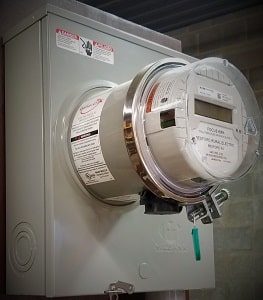How much does a GenerLink cost?
Last Updated on December 27, 2023
Written by CPA Alec Pow | Content Reviewed by ![]() CFA Alexander Popinker
CFA Alexander Popinker
Portable generators are essential when storms or grid troubles knock out electricity to homes. However, improperly rigging generators with extension cords risks safety hazards and damage. GenerLink offers a smart alternative – automatically switching your homeload to generator power right at the meter.
If you’re wondering how much GenerLink costs, then you should know that the average cost of a GenerLink generator is between $1,100 and $1,600 depending on amperage needs, electrician rates, and permit fees where you live. We’ll break it all down below!
How much does a GenerLink cost?
The GenerLink device itself ranges from $750 to $900+. You’ll also need:
| Service | Increased Price Range ($) |
|---|---|
| GenerLink Device (30 or 40-amp) | $750 – $1092 |
| Cord | $114 – $316 |
| Professional Install | $144 – $288 |
| Electrical Permit/Inspection | $172 – $288 |
| Total, including labor | $1200 – $1897 |
So all-in, parts and labor generally total $1178 to $1897 to have a certified GenerLink generator hookup professionally set up at your home’s meter.
Here are some examples of websites selling GenerLink:
Central Electric Cooperative is one of the companies that offer GenerLink transfer switches for sale. The prices reported are:
- 30-amp GenerLink: $774.00
- 40-amp GenerLink: $906.50
Price includes tax and installation costs. Surge protection and additional cord lengths are available for an additional cost.
Hutch Mountain also offers GenerLink™ Transfer Switch for sale, at a reported price of $935.95
The product comes with a 20-foot GenerLok Power Cable.
City Plumbing & Electric Supply offers GenerLink MA23-N for sale at a price of $889.95.
Factors Affecting Total GenerLink Cost
A few important factors affect overall pricing:
Amp Rating – GenerLink comes in 30 amp or 40 amp models. Match this to your generator wattage capacity to power essentials.
Retailer Pricing – Shop around at Home Depot, Amazon, and electrical supply stores for the best device-only pricing.
Electrician Rates – Install difficulty and local wage rates influence fees electricians charge.
Permits and Inspections – Your city may require an electrical inspection, permit or both to legally install GenerLink.
You might also like our article about the cost of a whole-house generator or a home windmill.

Additional Costs to Consider
On top of the GenerLink unit itself and professional installation:
- Generator maintenance – Yearly oil changes, tune-ups, etc.
- Tools – You may need pliers, screwdrivers, wire cutters for hookup.
- Generator fuel – Extended outages mean repeatedly refilling tanks.
- Ongoing electricity – Backup power isn’t free, factor gas or diesel costs.
How Does the GenerLink Generator Transfer Switch Work?
The GenerLink is a compact, UL-approved electrical device permanently mounting behind your home’s power meter.
When an outage hits, roll out your generator and fire it up per usual. Before connecting house loads, plug the generator cable into the GenerLink. Sensors instantly disconnect your home from the grid to prevent backflows.
With the switch safely made, flip breakers inside to restore appliances and fixtures up to your generator’s rated watt capacity. The GenerLink keeps supplying steady power until utility service returns.
Simple installation takes most electricians under 30 minutes without rewiring. The generator hookup works with any portable producing within house electrical requirements.
Let’s examine why GenerLink beats makeshift cords…
Benefits of a Pro Generator Hookup System
GenerLink simply makes generator backup more reliable and safer versus plugging cords through windows or doors when storms cut power. Pros include:
- Whole-home capability – Run virtually any circuit like central A/C units.
- Prevents risks – No backfeed accidents from improper use.
- Automatic switching – Link senses generators and disconnects from the grid.
- Frees up outlets – Don’t occupy interior plugs with extension cords.
- Compact size – Nearly invisible meter mount design.
- Peace of mind – Professional installation ensures safe operation.
For generator owners without a smart transfer switch, GenerLink is a wise upgrade bringing convenience and safety.
Usage Considerations
While GenerLink works universally for most homes, check a few details first:
Generator size – Device amp rating must match for full load capability.
Local regulations – Some areas prohibit meter switches, check with your utility.
Meter type – Requires standard housing, not A-base variety.
Of course, also check your portable generator itself has an outlet fitting one of GenerLink’s generator connector options before purchasing.
Tips to Save on GenerLink Cost
While essential GenerLink hardware and expert installs have fixed costs, you can economize with:
Federal tax credit – 30% of the total price may qualify as a renewable energy upgrade.
Rightsize your device – Don’t overspend on a 40 amp if a 30 amp meets your needs.
DIY-capable? – If you know electrical systems, self install meets codes in some areas.
The Benefits Outweigh the Costs
At $1,100-$1,600 installed, GenerLink units aren’t cheap. But safe, automatic generator connections that prevent damaging backfeeds and tedious extension cords? Absolutely priceless when disaster strikes.
Stay Powered Up Safely
Don’t mess with jury-rigged extension cords from garages and windows for generator power. Protect electrical systems and simplify back up juice with a smart GenerLink transfer switch instead.
With GenerLink’s automatic, convenient hookup, get all the freeze protection and appliance powering you need without hassling with cords or unsafe rigs. Stay safe and comfortable through the next blackout!


Can i buy one in washington state?
Check with your electric utility provider. They are not approved by all utility companies. I live in Colorado and excel allows them here.